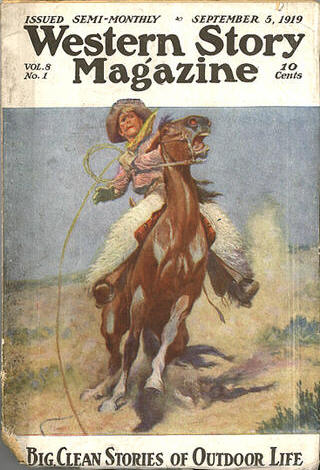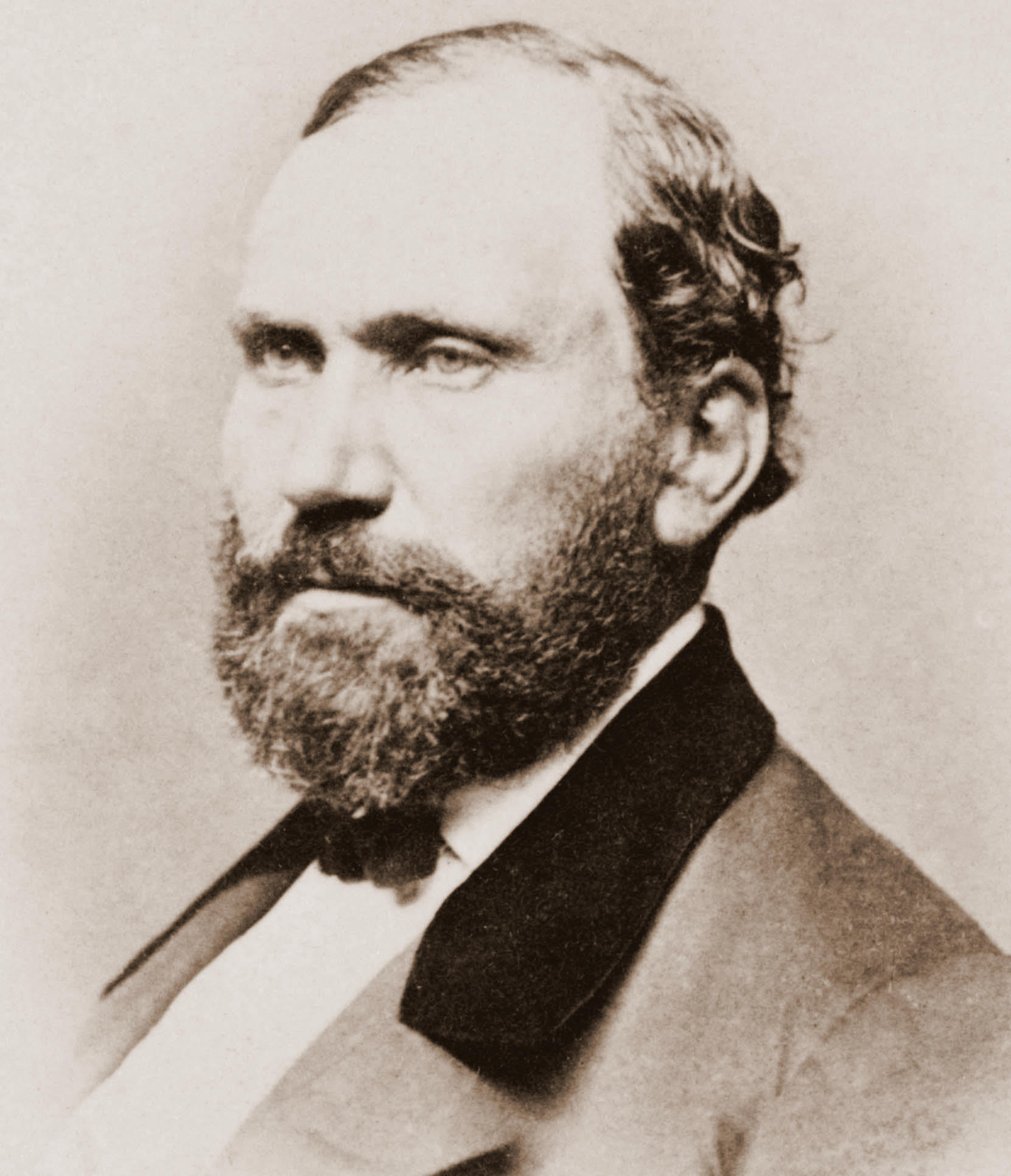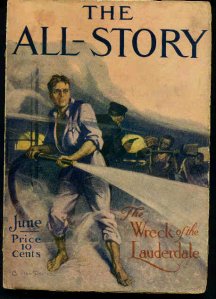|
H. Bedford-Jones
Henry James O'Brien Bedford-Jones (April 29, 1887 – May 6, 1949) was a Canadian-American historical, adventure fantasy, science fiction, crime and Western writer who became a naturalized United States citizen in 1908. Biography Bedford-Jones was born in Napanee, Ontario, Canada in 1887. His family moved to the United States when he was a teenager and he eventually became a naturalized U.S. citizen. After being encouraged to try writing by his friend, writer William Wallace Cook, Bedford-Jones began writing dime novels and pulp magazine stories. Mike Ashley, "Bedford Jones, H(enry James O'Brien)", in ''St. James Guide To Fantasy Writers'', edited by David Pringle, St. James Press, 1996, , p. 51-3. Bedford-Jones was an enormously prolific writer; the pulp editor Harold Hersey once recalled meeting Bedford-Jones in Paris, where he was working on two novels simultaneously, each story on its own separate typewriter. Bedford-Jones cited Alexandre Dumas as his main influence, and wrot ... [...More Info...] [...Related Items...] OR: [Wikipedia] [Google] [Baidu] |
Napanee
Greater Napanee is a town in Eastern Ontario, southeastern Ontario, Canada, approximately west of Kingston, Ontario, Kingston and the county seat of Lennox and Addington County. It is located on the eastern end of the Bay of Quinte. Greater Napanee municipality was created by amalgamating the old Town of Napanee with the townships of Adolphustown, North and South Fredericksburgh, and Richmond in 1999. Greater Napanee is co-extensive with the original Lennox County, Ontario, Lennox County. The town is home to the Allan Macpherson House, a historic 1826 property that is now a museum. Macpherson was a major in the Lennox militia, operated the town's grist and saw mills, as well as the distillery and general store. He served as post master and land agent, operated the first local printing press and helped fund the establishment of many local schools and churches. The home sits on the banks of the Napanee River, which runs through the town. The largest employer is a Goodyear Tire an ... [...More Info...] [...Related Items...] OR: [Wikipedia] [Google] [Baidu] |
:Template:Infobox Writer
{{Infobox , bodyclass = vcard , bodystyle = {{#if:{{{box_width , width:{{{box_width}; , child = {{lc:{{{embed } , title = {{#ifeq:{{lc:{{{embed }, yes, Writing career , abovestyle = font-size:125%; , above = {{#ifeq:{{lc:{{{embed }, yes, , {{#if:{{{honorific prefix, {{{honorific_prefix, {{{honorific-prefix} } , {{{honorific prefix, {{{honorific_prefix, {{{honorific-prefix }{{{name, {{PAGENAMEBASE }{{#if:{{{honorific suffix, {{{honorific_suffix, {{{honorific-suffix} } , {{{honorific suffix, {{{honorific_suffix, {{{honorific-suffix } , image = {{#invoke:InfoboxImage, InfoboxImage , image={{{image , size={{{image_size, {{{imagesize} , sizedefault=frameless , upright={{{image_up1} , alt={{{alt , title={{{caption , suppressplaceholder=yes , caption = {{{caption , captionstyle = line-height:1.4em; , labelstyle = line-height:1.2em; padding-right:0.65em; , datastyle = line-height:1.4em; , label1 = Native name , data1 = {{#if:{{{native_name , {{{native_name ... [...More Info...] [...Related Items...] OR: [Wikipedia] [Google] [Baidu] |
Western Story Magazine
''Western Story Magazine'' was a pulp magazine published by Street & Smith, which ran from 1919 to 1949.Doug Ellis, John Locke, and John Gunnison, (editors),''The Adventure House Guide to the Pulps'', Adventure House, 2000. (pp. 311–12). It was the first of numerous pulp magazines devoted to Western fiction. In its heyday, ''Western Story Magazine'' was one of the most successful pulp magazines; in 1921 the magazine was selling over half a million copies each issue.Ed Hulse, ''The Blood 'n' Thunder Guide to Collecting Pulps''. Murania Press, 2009. (pp. 137–141) The headquarters was in New York City. History ''Western Story Magazine'' began when Street & Smith executive Henry Ralston decided to convert one of the company's nickel weeklies, ''New Buffalo Bill Weekly'', into a pulp. Ralston installed Frank Blackwell as editor of the new magazine. The magazine attracted a number of famous Western authors, including Charles Alden Seltzer, H. Bedford-Jones, Stewart Edward White, ... [...More Info...] [...Related Items...] OR: [Wikipedia] [Google] [Baidu] |
Detective Fiction Weekly
A detective is an investigator, usually a member of a law enforcement agency. They often collect information to solve crimes by talking to witnesses and informants, collecting physical evidence, or searching records in databases. This leads them to arrest criminals and enable them to be convicted in court. A detective may work for the police or privately. Overview Informally, and primarily in fiction, a detective is a licensed or unlicensed person who solves crimes, including historical crimes, by examining and evaluating clues and personal records in order to uncover the identity and/or whereabouts of criminals. In some police departments, a detective position is achieved by passing a written test after a person completes the requirements for being a police officer. In many other police systems, detectives are college graduates who join directly from civilian life without first serving as uniformed officers. Some argue that detectives do a completely different job and the ... [...More Info...] [...Related Items...] OR: [Wikipedia] [Google] [Baidu] |
Golden Fleece Historical Adventure
''Golden Fleece Historical Adventure'' was an American adventure pulp magazine which published nine issues between 1938 and 1939. ''Golden Fleece'' specialised in publishing historical fiction. It published two stories by Robert E. Howard, the creator of Conan the Barbarian: " Black Vulmea's Vengeance" and "Gates of Empire". Other writers included Talbot Mundy, H. Bedford-Jones, Ralph Milne Farley, and Murray Leinster. Contributing artists included Jay Jackson, Harold Delay, Harold McCauley, and Margaret Brundage, who painted two covers for ''Golden Fleece''.Ashley (1985), pp. 319-320.Agnew, (2018) p. 174 Science fiction historian Mike Ashley describes it as a "rousing and unpretentious" magazine, and suggests that it may have failed because of distribution problems; the publisher, Sun Publications, was a small Chicago-based firm. Ashley also suggests that it would have been difficult for the magazine to compete with ''Adventure An adventure is an exciting experienc ... [...More Info...] [...Related Items...] OR: [Wikipedia] [Google] [Baidu] |
Oriental Stories
''Oriental Stories,'' later retitled ''The Magic Carpet Magazine'', was an American pulp magazine published by Popular Fiction Co., and edited by Farnsworth Wright. It was launched in 1930 under the title ''Oriental Stories'' as a companion to Popular Fiction's ''Weird Tales'', and carried stories with far eastern settings, including some fantasy. Contributors included Robert E. Howard, Frank Owen, and E. Hoffman Price. The magazine was not successful, and in 1932 publication was paused after the Summer issue. It was relaunched in 1933 under the title ''The Magic Carpet Magazine'', with an expanded editorial policy that now included any story set in an exotic location, including other planets. Some science fiction began to appear alongside the fantasy and adventure material as a result, including work by Edmond Hamilton. Wright obtained stories from H. Bedford Jones, a popular pulp writer, but competition from established pulps in the same niche, such as ''Adventure'', wa ... [...More Info...] [...Related Items...] OR: [Wikipedia] [Google] [Baidu] |
Top-Notch Magazine
Top Notch may refer to: * Top-Notch (artist), an artist produced by Swedish label Polar Music * TopNotch, a Dutch record label * ''Top-Notch Magazine'', an American pulp magazine of adventure fiction that existed between 1910 and 1937 * Top Notch (song), a song by American rapper Lil Boosie on the album '' Superbad: The Return of Boosie Bad Azz'' * Top Notch (New York), an elevation in Herkimer County, New York * Top Notch Peak, a summit in Yellowstone National Park, Wyoming, US * a variety of green beans See also * Top (other) A top is a spinning toy. Top also may refer to: Geography * Top, any subsidiary summit of a munro * Proper names of geographical features: ** Top River, tributary of the Olt, in Romania ** In Azerbaijan: *** Top, Oghuz, *** Top, Zangilan Peo ... * Notch (other) {{disambiguation ... [...More Info...] [...Related Items...] OR: [Wikipedia] [Google] [Baidu] |
Short Stories (magazine)
''Short Stories'' was an American fiction magazine that existed between 1890 and 1959. Origin of ''Short Stories'' ''Short Stories'' began its existence as a literary periodical, carrying work by Rudyard Kipling, Émile Zola, Bret Harte, Ivan Turgenev and Anna Katharine Green.Sampson, Robert. ''Yesterday's Faces : The Solvers''. Popular Press, 1987, (pp. 1-2) The magazine advertised itself with the slogan "Twenty-Five Stories for Twenty-Five Cents". After a few years, ''Short Stories'' became dominated by reprinted fiction. The magazine was sold in 1904 and eventually purchased by Doubleday, Page and Company, which in 1910 transformed ''Short Stories'' into a "quality pulp". The magazine's new editor, Harry E. Maule (1886-1971) placed an emphasis on ''Short Stories'' carrying well-written fiction; pulp magazine historian Robert Sampson states "For ''Short Stories'', like ''Adventure'' and ''Blue Book'' to follow, rose above the expedient prose of rival magazines like ivory to ... [...More Info...] [...Related Items...] OR: [Wikipedia] [Google] [Baidu] |
Argosy (magazine)
''Argosy'', later titled ''The Argosy'', ''Argosy All-Story Weekly'' and ''The New Golden Argosy'', was an American pulp magazine from 1882 through 1978, published by Frank Munsey until its sale to Popular Publications in 1942. It is the first American pulp magazine. The magazine began as a children's weekly story–paper entitled ''The Golden Argosy''. In the era before the Second World War, ''Argosy'' was regarded as one of the "Big Four" pulp magazines (along with ''Blue Book'', ''Adventure'' and ''Short Stories''), the most prestigious publications in the pulp market, that many pulp magazine writers aspired to publish in.Lee Server, ''Danger Is My Business: an illustrated history of the Fabulous Pulp Magazines''. San Francisco: Chronicle Books. (1993) (pp. 22-6, 50) John Clute, discussing the American pulp magazines in the first two decades of the twentieth century, has described ''The Argosy'' and its companion ''The All-Story'' as "the most important pulps of their er ... [...More Info...] [...Related Items...] OR: [Wikipedia] [Google] [Baidu] |
All-Story Weekly
''Argosy'', later titled ''The Argosy'', ''Argosy All-Story Weekly'' and ''The New Golden Argosy'', was an American pulp magazine from 1882 through 1978, published by Frank Munsey until its sale to Popular Publications in 1942. It is the first American pulp magazine. The magazine began as a children's weekly story–paper entitled ''The Golden Argosy''. In the era before the Second World War, ''Argosy'' was regarded as one of the "Big Four" pulp magazines (along with ''Blue Book (magazine), Blue Book'', ''Adventure (magazine), Adventure'' and ''Short Stories (magazine), Short Stories''), the most prestigious publications in the pulp market, that many pulp magazine writers aspired to publish in.Lee Server, ''Danger Is My Business: an illustrated history of the Fabulous Pulp Magazines''. San Francisco: Chronicle Books. (1993) (pp. 22-6, 50) John Clute, discussing the American pulp magazines in the first two decades of the twentieth century, has described ''The Argosy'' and its co ... [...More Info...] [...Related Items...] OR: [Wikipedia] [Google] [Baidu] |
Adventure (magazine)
''Adventure'' was an American pulp magazine that was first published in November 1910Robinson, Frank M. & Davidson, Lawrence ''Pulp Culture – The Art of Fiction Magazines''. Collectors Press Inc 2007 (p. 33-48). by the Ridgway company, an subsidiary of the Butterick Publishing Company. ''Adventure'' went on to become one of the most profitable and critically acclaimed of all the American pulp magazines."No. 1 Pulp" ''''. The magazine had 881 issues. Its first editor was Trumbull White, he was succeeded in 1912 by |
Blue Book (magazine)
''Blue Book'' was a popular 20th-century American magazine with a lengthy 70-year run under various titles from 1905 to 1975. Ashley, Mike, "Blue Book—The Slick in Pulp Clothing". ''Pulp Vault'' Magazine, No. 14. Barrington Hills, IL: Tattered Pages Press, 2011: pp. 210–53. It was a sibling magazine to '' The Red Book Magazine'' and ''The Green Book Magazine''. Launched as ''The Monthly Story Magazine'', it was published under that title from May 1905 to August 1906 with a change to ''The Monthly Story Blue Book Magazine'' for issues from September 1906 to April 1907. In its early days, ''Blue Book'' also carried a supplement on theatre actors called "Stageland". The magazine was aimed at both male and female readers. For the next 45 years (May 1907 to January 1952), it was known as ''The Blue Book Magazine'', ''Blue Book Magazine'', ''Blue Book'', and ''Blue Book of Fiction and Adventure''. The title was shortened with the February 1952 issue to simply ''Bluebook'', continuin ... [...More Info...] [...Related Items...] OR: [Wikipedia] [Google] [Baidu] |



